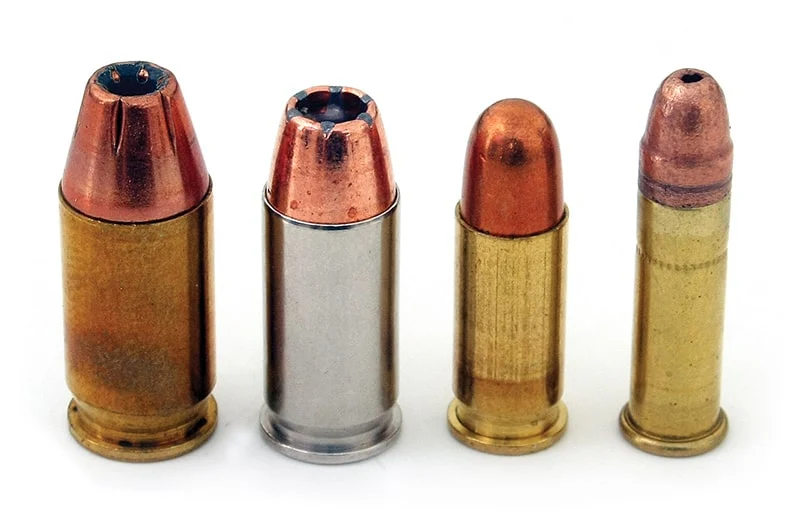
How to Pick the Perfect Ammo for Your Shoot
March 8, 2023Selecting the right ammunition for your firearm is a critical aspect of shooting sports, hunting, and personal defense. Whether you’re a seasoned marksman or a novice enthusiast, understanding the intricacies of ammunition selection can significantly impact your shooting experience. From caliber and bullet type to intended use and budget, there are various factors to consider when picking the perfect ammo for your shoot. Here, we’ll delve into the essential considerations to help you make informed decisions and optimize your shooting performance.
Understanding Caliber:
Caliber refers to the diameter of the bullet or projectile fired by a firearm. It’s one of the fundamental aspects to consider when choosing ammunition. Common calibers include .22LR, 9mm, .45 ACP, .308 Winchester, and .223 Remington, among others. Each caliber serves a specific purpose, ranging from target shooting and self-defense to hunting various game species.
When selecting ammunition, ensure it matches the caliber specified for your firearm. Using the wrong caliber can result in malfunction, poor accuracy, and potentially dangerous consequences. Always refer to your firearm’s manual or consult with experienced shooters if you’re unsure about compatibility.
Purpose and Intended Use:
The intended use of your firearm plays a crucial role in determining the type of ammunition you should choose. Different shooting activities require specific ammunition characteristics tailored to their respective purposes.
For target shooting and practice sessions, standard full metal jacket (FMJ) or target-grade ammunition is commonly used. These rounds offer reliable performance, consistent accuracy, and are often more affordable compared to specialized ammunition types.
For personal defense or home protection, hollow-point (HP) or jacketed hollow-point (JHP) ammunition is preferred. These bullets are designed to expand upon impact, maximizing stopping power while minimizing the risk of overpenetration and collateral damage.
For hunting, select ammunition that matches the game you’re pursuing and adheres to local regulations. Rifle cartridges are available in various configurations, including soft-point (SP), ballistic tip, and bonded bullets, each offering different terminal performance characteristics suited for specific game species and hunting conditions.
Bullet Weight and Design:
The weight and design of the bullet influence its ballistic performance, penetration capabilities, and terminal effects. Ammunition is typically categorized by bullet weight, measured in grains (gr). Heavier bullets generally offer deeper penetration and better performance against larger game or barriers, while lighter bullets may provide higher velocity and flatter trajectory.
Consider the intended application and firearm capabilities when choosing bullet weight. For example, heavier bullets are suitable for long-range shooting and hunting, while lighter bullets may be preferable for target shooting and personal defense, where rapid expansion and energy transfer are essential.
Bullet design also plays a significant role in performance. Common designs include full metal jacket (FMJ), hollow-point (HP), soft-point (SP), ballistic tip, and frangible bullets. Each design offers unique characteristics in terms of expansion, penetration, and terminal ballistics. Choose the bullet design that best suits your intended use and shooting preferences.
357 Magnum Ammo:
The .357 Magnum is a versatile and powerful revolver cartridge commonly used for self-defense, target shooting, and hunting small to medium-sized game. It offers excellent stopping power and manageable recoil, making it a popular choice among shooters.
When selecting .357 Magnum ammunition, consider factors such as bullet weight, design, and velocity to ensure optimal performance for your intended application. Options range from lightweight, high-velocity loads for self-defense to heavier, hard-cast bullets for hunting.
Budget and Availability:
Ammunition costs can vary significantly depending on factors such as caliber, bullet type, and manufacturer. While it’s essential to select quality ammunition that meets your requirements, budget considerations are also important, especially for frequent shooters.
Compare prices from different brands and retailers to find the best value for your money without compromising on quality and performance. Additionally, consider purchasing ammunition in bulk or during sales promotions to save money in the long run.
Availability is another crucial factor to consider, especially during periods of high demand or ammunition shortages. Keep an eye on stock levels at your local gun stores and online retailers, and plan ahead to ensure you have an adequate supply for your shooting activities.
Testing and Evaluation:
Once you’ve selected potential ammunition options based on the factors mentioned above, it’s essential to test them to determine their compatibility and performance in your firearm. Conducting a thorough evaluation involves shooting various ammunition types at different distances and under different conditions to assess accuracy, reliability, and terminal performance.
Take note of any malfunctions, deviations from point of aim, or inconsistencies in performance. This information will help you identify the most suitable ammunition for your firearm and shooting needs.
Conclusion:
Choosing the perfect ammunition for your shoot requires careful consideration of factors such as caliber, purpose, bullet weight and design, budget, and availability. By understanding these key aspects and conducting thorough testing and evaluation, you can select ammunition that delivers optimal performance, accuracy, and reliability, enhancing your shooting experience whether you’re on the range, in the field, or defending your home. Remember to prioritize safety at all times and adhere to firearm and ammunition guidelines and regulations to ensure a safe and enjoyable shooting experience.





